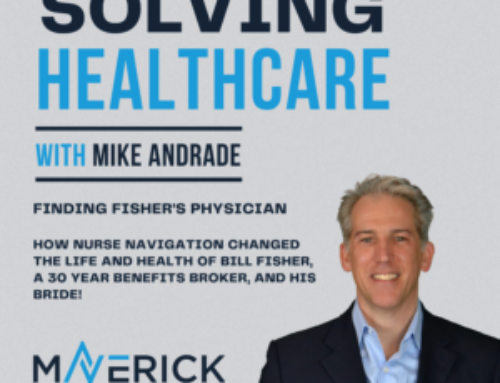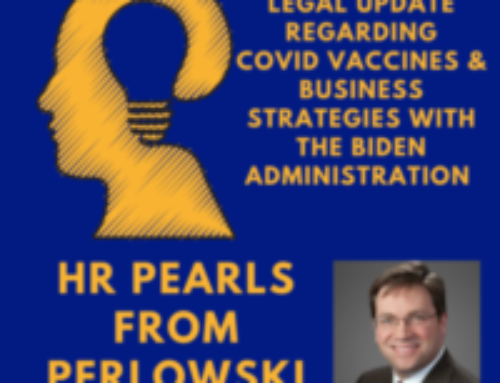Podcast: Play in new window | Download
Subscribe: RSS
Podcast Show Notes
Our podcast discussion today is between Michael Andrade and Edward Day, CEO of HST.
Welcome to Solving Healthcare. In this episode, we talk with Ed Day, CEO of HST. His company is focused on dramatically reducing the cost of healthcare by leveraging purchasing strategies that many Fortune 500 companies have adopted, but bringing value based reimbursement to small and mid-market sized organizations. In our interview we discuss challenges in the current healthcare system and how his company disrupts a traditional network and differentiates from other Reference Based Pricing providers. As you’ll learn during this podcast, just being able to reprice a claim with CMS data isn’t enough to deliver value. You have to know how to use the provider’s own data and CMS filings to substantiate reimbursement and have a compassionate team to reinforce and defend the Plan and the plan participants. We start off our interview with Ed telling us a little bit about himself….
About Ed, successful ventures that were acquired by venture capital. As an economist looked at Healthcare and the dysfunctional market that is healthcare. Started HST to bring tools and technology to healthcare to bring sensibility to healthcare and tools to right a social wrong. HST combines CMS data, reference based pricing, and compassionate patient advocacy to help solve a healthcare cost conundrum.
Problem #1: Huge pricing variations for the same procedures. No sense of price shopping and value. No advance pricing of a procedure when 90% of all hospital services are elective in nature, meaning they aren’t an emergency.
Problem #2: Not a marketplace now to assimilate quality of outcomes, level of experience performing procedures and how they compare to other providers, experience level, and outcomes for a fair and reasonable price.
Problem #3: CMS generates approximately 60% of all transactions in the US, effectively Usual & Customary that’s defensible. It’s a very complex subset of information that’s not easily translated by consumers. How do you take this, called the CMS star rating and rationalize it and in a presentable format so that consumers and health advocates can use it to navigate the healthcare system.
HST solutions:
Pathfinder – allows medical management companies to price health services before they’re rendered. Before procedure is rendered (for non-emergency claims) the price of the claim and be provided prior to the service being rendered based off the procedure being performed. This allows HST to differentiate against other RBP vendors as their price is validated and agreed upon before services are rendered and work with a provider based off their quality ratings. Also allows for provider comparison and pricing based off quality data.
CMS Filing Data – beauty of CMS data is that HST can pull up the regulatory filings to see the amount that the provider accepts for similar reimbursements and what the procedure costs for that provider. Medicare reimbursement does provide an allocation for profit in the Medicare population.
Balance Billing Defense – how HST manages the billing process. First line of defense is the prior auth of care at a disclosed price. Agreement of
Value Based Reimbursement – With filing and cost data HST can have a collaborative relationship with the provider and generally can defend that 140% of medicare is a fair reimbursement.
Patient Advocacy – Advocates are responsible for front line navigation of problem resolution and take the patient out of the middle. They are there to navigate the resolution of a claim that may be balance billed. Less than 2% of HST claims are balance billed (Much less than the 9% of balance billed claims through traditional insurance) and the Advocate’s job is to take over the communication with the provider and resolve the claim through an assignment and using the fair credit reporting act to resolve the claim and protect the patient.
Advocates are also typically from a hospital billing or provider environment. They’re compassionate individuals that advocate for the patient and also work closely with providers to validate their claims of superior quality and justification for reimbursement. There is some collaboration involved with the settlement of a claim however it must be a reasonable resolution using cost, quality, and fair price based on value. They’re the sole connection between the provider and the billing issue. Advocates are charged with resolving the issue and take the patient out of the middle.
Plan Language – Appropriate plan document language can help drive an appropriate settlement with a provider and plan member. Conditional acceptance of the reference price as a condition for working with the RBP provider and plan.
Defense of claims – how HST is different than your traditional plan. HST negotiates with the provider using the providers’ CMS regulatory filing and knows how much they make and will take from CMS. As a result, the provider’s ability to push back is compromised as they have the pricing and cost data for what they’ve accepted for similar or more risky procedures. As a result they negotiate from a position of leverage.
Tools you give members to help support the consumer when they’re trying to navigate the healthcare system. Hospital Comparison for quality and cost structures on smart phone app. Also has portal technology that allows TPA’s, HR, Broker/Consultant to help advocate on behalf of the patient.
Also, referral patterns are typically based off tribal knowledge and no clinical basis for referrals. Next gen of HST is to facilitate between PCP to specialist to communicate the quality/star ratings to PCP in order to have a quality hand off
Advice to Plan sponsors: What advice would you give to Plan Sponsors considering entering an RBP world? It’s a change from what you’re used to so you want to make sure the TPA is experienced in working with RBP vendors. Having a TPA that has implemented these programs and there is a learning curve in working with vendors and the issues that come up during the claim and settlement process. Need advice and navigation from an experienced broker is essential to successful outcomes of RBP, stop-loss, plan document, and holding all parties accountable for the client and their employees.
How do you make money? Predominant models bill on percentage of billed charges or percentage of savings. Not a good model as you could end up increasing your overall cost. Also, you’ll be giving more $ to the RBP provider rather than keeping it for your employees and your business. HST average ROI is 40:1 for their flat fee. They charge a per employee per month fee rather than a percentage of savings.
Texas example of a public sector client using a percentage of savings model (other vendor) 15% of the savings went back to the plan 85% went to the RBP vendor. Wasn’t a good use of funds at all.
If you’d like to learn how this and other programs can fit into your benefit strategy please feel free to contact me: Michael Andrade (832) 236-8966




